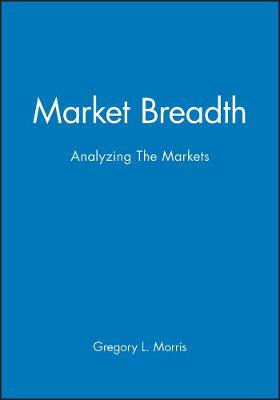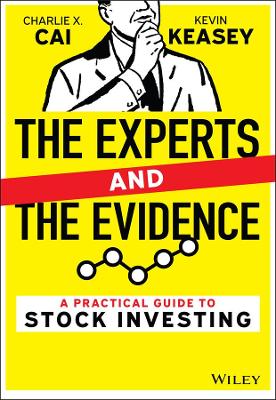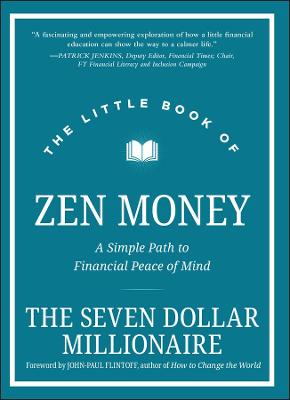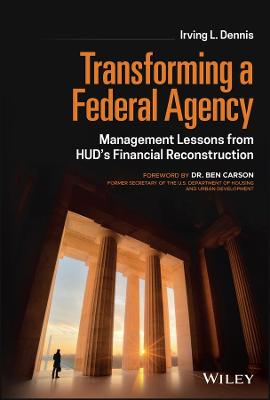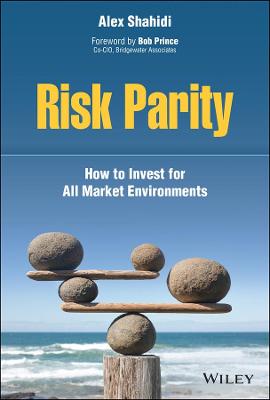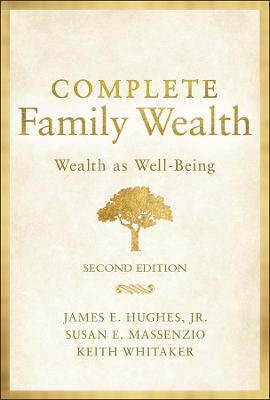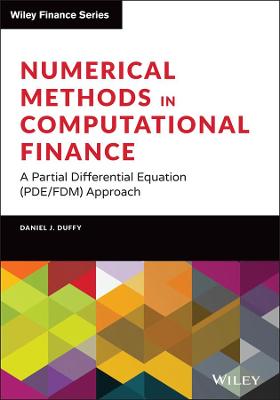Kickstart Your Corporation
 -15%
portes grátis
-15%
portes grátis
Kickstart Your Corporation
The Incorporated Professional's Financial Planning Coach
Feindel, Andrew
John Wiley & Sons Inc
12/2020
288
Dura
Inglês
9781119709138
15 a 20 dias
480
About the Author xix
Introduction: The Value of a Coach xxi
Chapter 1: Incorporation 101 1
Why Incorporate? 2
What Does It Cost to Incorporate? 2
What's the Process to Incorporate? 3
Written Consent 4
Articles of Incorporation 4
Payroll Remittances 4
Employment Contracts 5
Transferring Assets 5
Real Estate 6
Insurance Policies 6
Choosing Your Corporation's Year-End and Maintaining Your Corporate Records 7
When Does It Not Make Sense to Incorporate? 8
What If You Have No Small Business Deduction? 10
How Does Purchasing a Home Fit into My Incorporation Timeline? 11
Saving for a Down Payment: Incorporated and Non-Incorporated Options 11
Can I Purchase My Principal Residence through My Corporation? 12
What about Shareholder Loans? 14
Does a Professional Corporation Give Me Creditor Protection? 15
How Could I "Supercharge" My Charitable Donation? 16
What is the Lifetime Capital Gains Exemption (LCGE)? 17
Now That I Have Incorporated, Can I Deduct My Golf Membership Fees? 20
What Do I Do with My Corporation When I Retire? 20
Real-Life Case Example of Restructuring Shares 21
Chapter 2: The Compensation Decision: Salary or Dividends? 25
Understanding the Roots of the Compensation Question 26
Salary as Compensation 27
Dividends as Compensation 27
Dividend-Splitting with Family Members 28
The Old Rules: Pre-2018 28
The New Rules: Tax on Split Income-2019 and Afterwards 29
Tax Integration 33
Salary versus Dividend Examples 33
Do You Want to Put Your Savings in an RRSP or in Your Corporation? 35
The Value in the RRSP/Corporation Today 36
The Tax Characteristics of Growth on the Investments 37
Will We Pass Away with Funds in Our RRSP or Corporation? 40
Other Factors 41
Increased Financial Control 41
Psychological Factors 41
Creditor Protection 42
Future Tax Law Changes 42
Do We Want to Participate in the Canadian Pension Plan (CPP)? 42
Beware the Overpayment Trap 44
CPP Trends to Watch 44
Bottom-Line Considerations 45
Do We Have Investments Inside the Corporation? 45
What Are Some Exceptions to these Rules? 46
Small Business Deduction (SBD) 46
Child Care Deduction 47
SR&ED 47
Other Specific Considerations 47
Chapter 3: Investing Inside Your Corporation 51
Can I Invest through My Corporation? 52
What the Income Tax Act Says about Investing through a Corporation 52
Structuring Investments Inside the Corporation 53
Example 54
RDTOH (Refundable Dividend Tax On Hand) 55
Capital Dividend Account (CDA) 55
Example 56
New Passive Income Tax Rules 57
Reminder: Asset Allocation Still Matters 58
What Are Corporate-Class Investments? 60
The Power of Tax-Deferred Compounding 62
Working through the Example 63
Working through the Example 65
Rule Changes from Federal Budget 2016 66
Considerations with Corporate Class 67
Fees 67
Loss of Control 68
Little Fixed Income Exposure 69
Future Potential Rule Changes 70
What If I Want to Try Investing on My Own? 70
What If They Increase Capital Gains Taxes? 70
Chapter 4: Valuing Permanent Insurance on the Holistic Corporate Balance Sheet 73
A Review of the Basics-Permanent Life Insurance as Tax Arbitrage 74
The Benefits of Corporate-Owned Permanent Life Insurance 75
Pay Premiums with Corporate Dollars 75
Avoid New Passive Income Rules 76
Creating Cash Flow 76
Provide a Tax-Efficient Financial Legacy 77
A Real-World Example: My Plan in Action 78
Funding the Plan 78
The Growth of Funds in the Plan 79
Assumptions in the Projections 79
Rates of Return Assumptions 80
Beyond the First 10 Years 81
The Plan as an Investment 81
Understanding the Criticisms of Corporate-Held Permanent Life Insurance 83
Risk Review: Economic and Tax Considerations 83
Tax Policy Risk: "What if tax rates change?" 83
Economic Risk: "What if dividend rates or interest rates change?" 84
Appropriateness Review: Concerns about the Sales Process 85
"This strategy is designed to maximize advisor sales commissions-if it's so good, why do so many people oppose it?" 85
"Shouldn't I help my kids today, instead of building an estate?" 86
This strategy is "an expensive way to buy insurance, and I can get
higher investment returns elsewhere"-shouldn't I just "buy term and invest the difference?" 86
The True Cost of Term Insurance 86
Buying Term and Investing the Difference: A Review of the Facts
and Assumptions 87
"What if something changes and I can't afford the premiums?" 89
Comparing U.S. and Canadian Scenarios 89
Chapter 5: Risk Management 93
A Careful Examination 93
The Way We Think About Insurance 94
Wealth Insurance 95
Wealth Insurance on Parents 95
When You Pay the Premiums 95
Example 96
When an Estate Bond Pays the Premiums 98
Example 99
Risk Insurance (Life and Disability Insurance) 100
Risk Insurance 100
Example 100
Life Insurance 101
How much life insurance do we need? 101
Example 102
Association Plan or Individual Plan Life Insurance? 103
Disability Insurance 105
Disability Insurance: Do We Need the Ferrari Disability Package? 106
The Good Insurance Rider 106
The Situational/Dynamic Insurance Riders 107
The Don't Always Recommend Riders 108
Example 109
Other Common Questions 109
Should we own insurance corporately? 109
I'm young and invincible; should I have disability insurance? 110
Should I get a lump-sum payout instead? 110
Critical Illness Insurance 110
Long-Term Care Insurance 112
Chapter 6: Borrowing to Invest 115
What is Leverage? 115
Who Are Good Candidates for Using Leverage? 119
Enhancing Returns in the Corporation with Leverage 119
Strategic Prudent Leverage: Timing 123
Some Basic Assumptions 123
Building a Non-Registered Portfolio 124
Example 125
Migrating Efficiently to a Non-Registered Portfolio 126
Withdrawing from the RRSP with the Use of an Offsetting Deduction 127
Make Your Mortgage Interest Tax-Deductible 128
Debt Swap Scenario 1: Making Your Mortgage Interest Tax-Deductible 128
Example 129
Debt Swap Scenario 2: Parents Helping Kids HelpThemselves 129
Example 130
Investments That Use Leverage 132
Leveraged and Inverse ETFs 132
Example 132
Risk Parity Funds 133
When Does Leveraging Go Bad? 134
Some Built-In Conflicts of Interest 134
Examples 134
Chapter 7: Investing: Active or Passive? 139
What is Active Investing and What is Passive Investing? 140
Understanding Investment Trends 141
A Deep Dive into Passive Management 142
Fees-Passive Management 142
The Impact of Fees 143
Performance 144
What about Outside Canada? 148
Diving into Active Management 149
The Behavioral Gap 149
Better Risk Management 150
Fees-Active Management 150
Flexibility to Manage After-Tax Returns 151
Allowing Pursuit of Expressive Objectives 151
Market Return Does Not Equal Average Investor Return 151
Performance 152
Is Your Fund "Truly Active"? 152
The Growth of Passive Investments May Sow the Seeds of Their Underperformance 153
Access to IPOs May Become More of a Differentiating Factor 153
Wrapping Up the Debate 154
Fees 154
Performance 155
Behavior 157
Chapter 8: The Role of Trusts in Your Financial Plan 163
Speaking the Language of Trusts 164
Trust Concepts 165
Residency of Trusts 165
Taxation of Trusts 165
The 21-Year Rule 166
Probate 167
Privacy 167
Inter Vivos Trusts 167
Example 169
Example 169
Discretionary Investment Trust for Grandchildren 170
Example 171
Bearer Trusts 171
Inter Vivos Cottage Trust 172
Testamentary Trusts 173
Establishment of Testamentary Trusts 173
Asset Protection 173
Tax Savings 174
Other Factors to Consider 177
Probate 177
Costs 177
Minor Children 178
For Family Members with Special Needs 179
Spousal Trust 179
Use of Spousal Trust 180
When a Testamentary Trust Loses Its Status 181
Chapter 9: Alternative Investment Strategies 183
Capital Gains Strip 184
Suitability for Capital Gains Strip 186
Overall Bottom Line 187
Individual Pension Plans (IPP and PPP) 188
Why an IPP? 188
Considerations 190
Suitability 191
Next Steps 191
What's the Difference between an IPP and a PPP? 192
Overall Bottom Line 193
Retirement Compensation Arrangements 194
Steps to Implement an RCA 195
Advantages of the RCA 195
Disadvantages of the RCA 197
Investment Account 197
Withdrawals 198
Overall Bottom Line 198
Investing in Watches: Can I Buy My Rolex through the Corporation? 198
Overall Bottom Line 200
Art: Can I Buy My Pablo Picasso Painting through the Corporation? 200
Buying Art 200
Transferring Art 200
Selling/Donating Art 201
Overall Bottom Line 203
Private Health Services Plans 203
Health Spending Accounts 204
Chapter 10: Pulling It All Together: Your Financial Plan 209
The Value of a Financial Plan 213
Example 214
Plan Analysis Synopsis 215
Client Information 215
Family Member Information 215
Advisor Information 215
Plan Assumptions 215
Estate Assumptions 216
Income Information 216
CPP/QPP & OAS Information 216
Expense Information 217
Regular Expenses 217
Lump-Sum Expenses 217
Insurance Scenario Lump-Sum Expenses 218
Lifestyle Asset Information 218
Portfolio Assets 218
Liabilities 219
Life Insurance Policies 220
Disability Insurance Policies 220
Critical Illness Insurance Policies 220
Education Goals 220
Savings Strategies 221
Surplus Savings Strategies 221
RRSP Maximizer Savings Strategies 222
Transfer Strategies 222
Deficit Coverage Order During Pre-Retirement 222
Liquidation Order During Retirement 223
Private Corporation Synopsis 223
Dr. Michael Jones Corp.-Current Plan 223
Summary 223
Share Ownership 224
Preferred Ownership 224
Historical Data 224
Investment Accounts 225
Real Estate Assets 225
Contributions-Inter-Company Dividends Received 225
Withdrawals-Manual Dividend Distributions 225
Estate 225
Net Worth Statement 227
Current Plan 227
Net Worth Timeline 227
Current Plan 227
Net Worth Outlook 228
Current Plan 228
Cash Flow Outlook 230
Current Plan 230
Retirement Cash Flow Timeline 231
Current Plan 231
Retirement Need and Investable Assets 232
Current Plan 232
Detailed Estate Analysis 235
Current Plan 235
Utilizing Tax-Efficient Strategies 237
Recommendations 238
Net Worth 238
Proposed Recommendations-Utilizing Tax Efficient Strategies Available for Corporations 238
Cash Flow Outlook 239
Proposed Plan 239
Net Worth Timeline 242
Proposed Plan 242
Net Worth Outlook 242
Proposed Plan 242
Retirement Cash Flow Timeline 244
Proposed Plan 244
Retirement Need and Investable Assets 246
Proposed Plan 246
Detailed Estate Analysis 249
Proposed Plan 249
Closing Thoughts: Your Next Steps 251
Index 255
About the Author xix
Introduction: The Value of a Coach xxi
Chapter 1: Incorporation 101 1
Why Incorporate? 2
What Does It Cost to Incorporate? 2
What's the Process to Incorporate? 3
Written Consent 4
Articles of Incorporation 4
Payroll Remittances 4
Employment Contracts 5
Transferring Assets 5
Real Estate 6
Insurance Policies 6
Choosing Your Corporation's Year-End and Maintaining Your Corporate Records 7
When Does It Not Make Sense to Incorporate? 8
What If You Have No Small Business Deduction? 10
How Does Purchasing a Home Fit into My Incorporation Timeline? 11
Saving for a Down Payment: Incorporated and Non-Incorporated Options 11
Can I Purchase My Principal Residence through My Corporation? 12
What about Shareholder Loans? 14
Does a Professional Corporation Give Me Creditor Protection? 15
How Could I "Supercharge" My Charitable Donation? 16
What is the Lifetime Capital Gains Exemption (LCGE)? 17
Now That I Have Incorporated, Can I Deduct My Golf Membership Fees? 20
What Do I Do with My Corporation When I Retire? 20
Real-Life Case Example of Restructuring Shares 21
Chapter 2: The Compensation Decision: Salary or Dividends? 25
Understanding the Roots of the Compensation Question 26
Salary as Compensation 27
Dividends as Compensation 27
Dividend-Splitting with Family Members 28
The Old Rules: Pre-2018 28
The New Rules: Tax on Split Income-2019 and Afterwards 29
Tax Integration 33
Salary versus Dividend Examples 33
Do You Want to Put Your Savings in an RRSP or in Your Corporation? 35
The Value in the RRSP/Corporation Today 36
The Tax Characteristics of Growth on the Investments 37
Will We Pass Away with Funds in Our RRSP or Corporation? 40
Other Factors 41
Increased Financial Control 41
Psychological Factors 41
Creditor Protection 42
Future Tax Law Changes 42
Do We Want to Participate in the Canadian Pension Plan (CPP)? 42
Beware the Overpayment Trap 44
CPP Trends to Watch 44
Bottom-Line Considerations 45
Do We Have Investments Inside the Corporation? 45
What Are Some Exceptions to these Rules? 46
Small Business Deduction (SBD) 46
Child Care Deduction 47
SR&ED 47
Other Specific Considerations 47
Chapter 3: Investing Inside Your Corporation 51
Can I Invest through My Corporation? 52
What the Income Tax Act Says about Investing through a Corporation 52
Structuring Investments Inside the Corporation 53
Example 54
RDTOH (Refundable Dividend Tax On Hand) 55
Capital Dividend Account (CDA) 55
Example 56
New Passive Income Tax Rules 57
Reminder: Asset Allocation Still Matters 58
What Are Corporate-Class Investments? 60
The Power of Tax-Deferred Compounding 62
Working through the Example 63
Working through the Example 65
Rule Changes from Federal Budget 2016 66
Considerations with Corporate Class 67
Fees 67
Loss of Control 68
Little Fixed Income Exposure 69
Future Potential Rule Changes 70
What If I Want to Try Investing on My Own? 70
What If They Increase Capital Gains Taxes? 70
Chapter 4: Valuing Permanent Insurance on the Holistic Corporate Balance Sheet 73
A Review of the Basics-Permanent Life Insurance as Tax Arbitrage 74
The Benefits of Corporate-Owned Permanent Life Insurance 75
Pay Premiums with Corporate Dollars 75
Avoid New Passive Income Rules 76
Creating Cash Flow 76
Provide a Tax-Efficient Financial Legacy 77
A Real-World Example: My Plan in Action 78
Funding the Plan 78
The Growth of Funds in the Plan 79
Assumptions in the Projections 79
Rates of Return Assumptions 80
Beyond the First 10 Years 81
The Plan as an Investment 81
Understanding the Criticisms of Corporate-Held Permanent Life Insurance 83
Risk Review: Economic and Tax Considerations 83
Tax Policy Risk: "What if tax rates change?" 83
Economic Risk: "What if dividend rates or interest rates change?" 84
Appropriateness Review: Concerns about the Sales Process 85
"This strategy is designed to maximize advisor sales commissions-if it's so good, why do so many people oppose it?" 85
"Shouldn't I help my kids today, instead of building an estate?" 86
This strategy is "an expensive way to buy insurance, and I can get
higher investment returns elsewhere"-shouldn't I just "buy term and invest the difference?" 86
The True Cost of Term Insurance 86
Buying Term and Investing the Difference: A Review of the Facts
and Assumptions 87
"What if something changes and I can't afford the premiums?" 89
Comparing U.S. and Canadian Scenarios 89
Chapter 5: Risk Management 93
A Careful Examination 93
The Way We Think About Insurance 94
Wealth Insurance 95
Wealth Insurance on Parents 95
When You Pay the Premiums 95
Example 96
When an Estate Bond Pays the Premiums 98
Example 99
Risk Insurance (Life and Disability Insurance) 100
Risk Insurance 100
Example 100
Life Insurance 101
How much life insurance do we need? 101
Example 102
Association Plan or Individual Plan Life Insurance? 103
Disability Insurance 105
Disability Insurance: Do We Need the Ferrari Disability Package? 106
The Good Insurance Rider 106
The Situational/Dynamic Insurance Riders 107
The Don't Always Recommend Riders 108
Example 109
Other Common Questions 109
Should we own insurance corporately? 109
I'm young and invincible; should I have disability insurance? 110
Should I get a lump-sum payout instead? 110
Critical Illness Insurance 110
Long-Term Care Insurance 112
Chapter 6: Borrowing to Invest 115
What is Leverage? 115
Who Are Good Candidates for Using Leverage? 119
Enhancing Returns in the Corporation with Leverage 119
Strategic Prudent Leverage: Timing 123
Some Basic Assumptions 123
Building a Non-Registered Portfolio 124
Example 125
Migrating Efficiently to a Non-Registered Portfolio 126
Withdrawing from the RRSP with the Use of an Offsetting Deduction 127
Make Your Mortgage Interest Tax-Deductible 128
Debt Swap Scenario 1: Making Your Mortgage Interest Tax-Deductible 128
Example 129
Debt Swap Scenario 2: Parents Helping Kids HelpThemselves 129
Example 130
Investments That Use Leverage 132
Leveraged and Inverse ETFs 132
Example 132
Risk Parity Funds 133
When Does Leveraging Go Bad? 134
Some Built-In Conflicts of Interest 134
Examples 134
Chapter 7: Investing: Active or Passive? 139
What is Active Investing and What is Passive Investing? 140
Understanding Investment Trends 141
A Deep Dive into Passive Management 142
Fees-Passive Management 142
The Impact of Fees 143
Performance 144
What about Outside Canada? 148
Diving into Active Management 149
The Behavioral Gap 149
Better Risk Management 150
Fees-Active Management 150
Flexibility to Manage After-Tax Returns 151
Allowing Pursuit of Expressive Objectives 151
Market Return Does Not Equal Average Investor Return 151
Performance 152
Is Your Fund "Truly Active"? 152
The Growth of Passive Investments May Sow the Seeds of Their Underperformance 153
Access to IPOs May Become More of a Differentiating Factor 153
Wrapping Up the Debate 154
Fees 154
Performance 155
Behavior 157
Chapter 8: The Role of Trusts in Your Financial Plan 163
Speaking the Language of Trusts 164
Trust Concepts 165
Residency of Trusts 165
Taxation of Trusts 165
The 21-Year Rule 166
Probate 167
Privacy 167
Inter Vivos Trusts 167
Example 169
Example 169
Discretionary Investment Trust for Grandchildren 170
Example 171
Bearer Trusts 171
Inter Vivos Cottage Trust 172
Testamentary Trusts 173
Establishment of Testamentary Trusts 173
Asset Protection 173
Tax Savings 174
Other Factors to Consider 177
Probate 177
Costs 177
Minor Children 178
For Family Members with Special Needs 179
Spousal Trust 179
Use of Spousal Trust 180
When a Testamentary Trust Loses Its Status 181
Chapter 9: Alternative Investment Strategies 183
Capital Gains Strip 184
Suitability for Capital Gains Strip 186
Overall Bottom Line 187
Individual Pension Plans (IPP and PPP) 188
Why an IPP? 188
Considerations 190
Suitability 191
Next Steps 191
What's the Difference between an IPP and a PPP? 192
Overall Bottom Line 193
Retirement Compensation Arrangements 194
Steps to Implement an RCA 195
Advantages of the RCA 195
Disadvantages of the RCA 197
Investment Account 197
Withdrawals 198
Overall Bottom Line 198
Investing in Watches: Can I Buy My Rolex through the Corporation? 198
Overall Bottom Line 200
Art: Can I Buy My Pablo Picasso Painting through the Corporation? 200
Buying Art 200
Transferring Art 200
Selling/Donating Art 201
Overall Bottom Line 203
Private Health Services Plans 203
Health Spending Accounts 204
Chapter 10: Pulling It All Together: Your Financial Plan 209
The Value of a Financial Plan 213
Example 214
Plan Analysis Synopsis 215
Client Information 215
Family Member Information 215
Advisor Information 215
Plan Assumptions 215
Estate Assumptions 216
Income Information 216
CPP/QPP & OAS Information 216
Expense Information 217
Regular Expenses 217
Lump-Sum Expenses 217
Insurance Scenario Lump-Sum Expenses 218
Lifestyle Asset Information 218
Portfolio Assets 218
Liabilities 219
Life Insurance Policies 220
Disability Insurance Policies 220
Critical Illness Insurance Policies 220
Education Goals 220
Savings Strategies 221
Surplus Savings Strategies 221
RRSP Maximizer Savings Strategies 222
Transfer Strategies 222
Deficit Coverage Order During Pre-Retirement 222
Liquidation Order During Retirement 223
Private Corporation Synopsis 223
Dr. Michael Jones Corp.-Current Plan 223
Summary 223
Share Ownership 224
Preferred Ownership 224
Historical Data 224
Investment Accounts 225
Real Estate Assets 225
Contributions-Inter-Company Dividends Received 225
Withdrawals-Manual Dividend Distributions 225
Estate 225
Net Worth Statement 227
Current Plan 227
Net Worth Timeline 227
Current Plan 227
Net Worth Outlook 228
Current Plan 228
Cash Flow Outlook 230
Current Plan 230
Retirement Cash Flow Timeline 231
Current Plan 231
Retirement Need and Investable Assets 232
Current Plan 232
Detailed Estate Analysis 235
Current Plan 235
Utilizing Tax-Efficient Strategies 237
Recommendations 238
Net Worth 238
Proposed Recommendations-Utilizing Tax Efficient Strategies Available for Corporations 238
Cash Flow Outlook 239
Proposed Plan 239
Net Worth Timeline 242
Proposed Plan 242
Net Worth Outlook 242
Proposed Plan 242
Retirement Cash Flow Timeline 244
Proposed Plan 244
Retirement Need and Investable Assets 246
Proposed Plan 246
Detailed Estate Analysis 249
Proposed Plan 249
Closing Thoughts: Your Next Steps 251
Index 255



